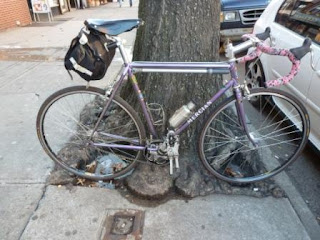In my youth (Yes, I had one of those!), I saved my pennies (OK, nickels, dimes, quarters and dollars, too!) so I could buy a Colnago. Back then, many serious riders (and wannabes) saw it as the be-all and end-all of racing bikes.
And, yes, I did race on mine. How much of a difference did the Colnago make? Well, I didn’t exactly make my fantasy come true: My Colnago Arabesque would be the last bike (frame, actually) I’d buy. Someone, i.e., a race team sponsor, would buy me my next bike, whether it were a Colnago or something else.
Of course, I can’t blame the bike: I started racing later than those guys named Eddy and Jacques and Bernard. And I probably didn’t spend as much training because, you know, I had another job. For those guys, training was their job: They spent at least as much time at it as I did in my non-cycling employment.
Anyway, I am remembering how I saved my money for the Arabesque because I just learned that Sotheby’s is auctioning a Colnago. No, not the one I rode. Is it the one Tadej Pogačar pedaled to the podium? (Ok, I was taking poetic license!) Well, almost: It’s the same model-V4Rs—but with a twist: It’s gold-plated.
How many pennies would I have to save for that one? Well, if I skip a few meals and museum trips and don’t buy any more bike stuff or clothes, I can afford…to go to the auction. It’s being held in Monaco. But once I get there, will I be able to afford to park my yacht?😏












